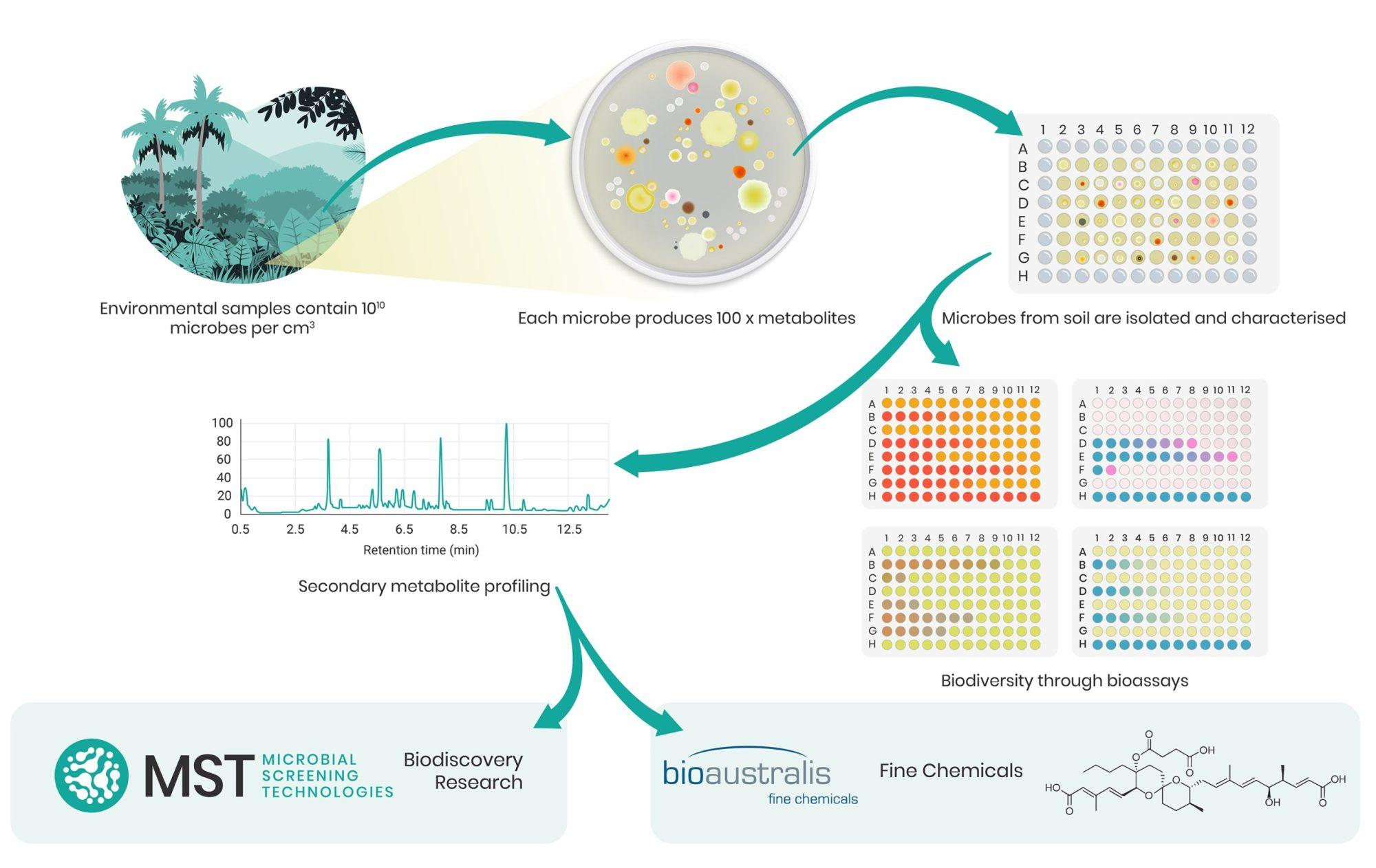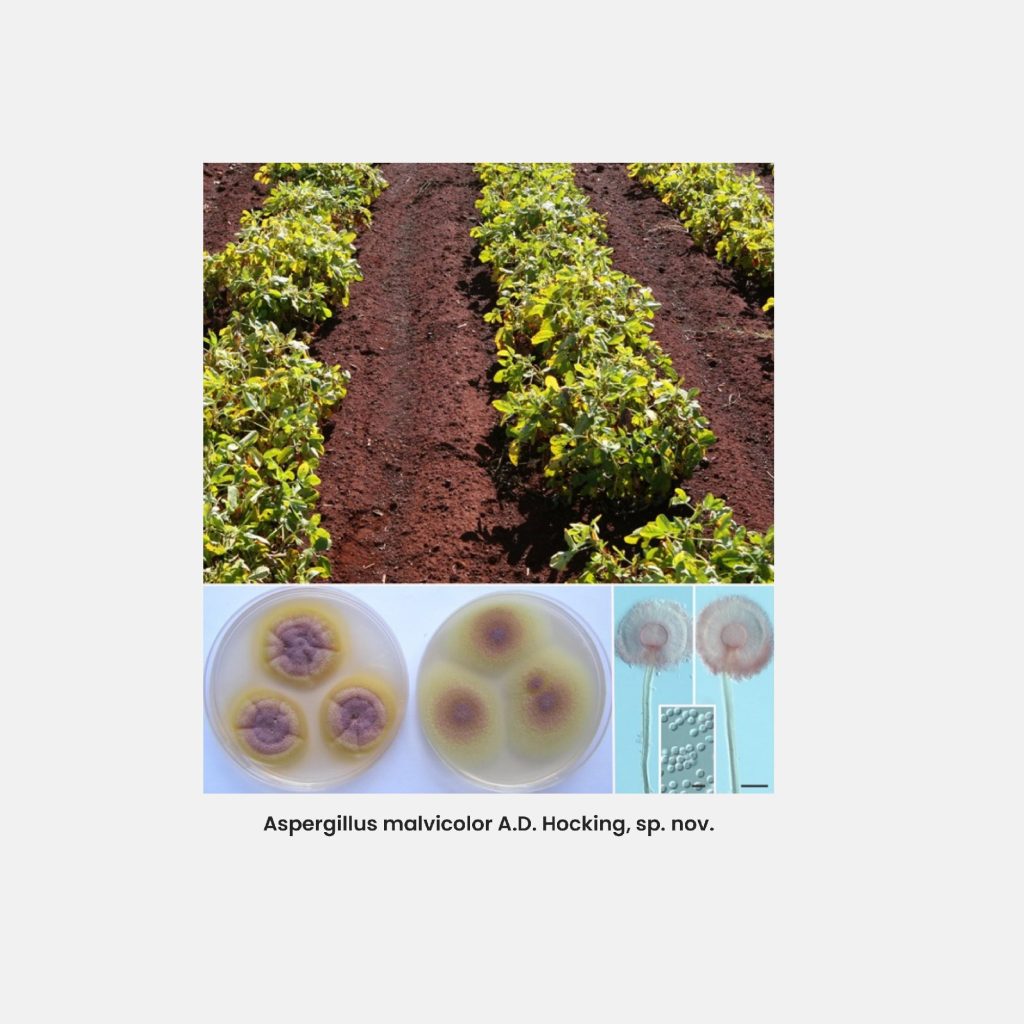How deep is the chemical diversity of microbes?
Microbial chemistry has given rise to many of the world’s agricultural products and human and animal health therapeutics, yet 80 years of discovery has offered only a glimpse of the potential novelty.
Our understanding of microbes is exploding. Currently ~150,000 fungi are reported in the Catalogue of Life but this taxonomic framework excludes the millions of fungi, bacteria and archaea that lie waiting with unrecognised potential and application. Molecular techniques have opened doors to understanding microbial diversity unforeseen decades ago. Genomics offers an alternate technology to source novelty. Nevertheless, access to a stream of chemical diversity from this technology is still a bridge too far.
MST adopts a simple axiom to biodiversity: If the chemical profile of an extract is novel then the species is unique. In over a decade, every sequenced microbial strain with a unique chemical profile has been shown to be a new species, delivering chemical novelty. The chemical profile is the first and best step to ensure novelty and diversity in microbial discovery. 60% of microbes isolated by MST represent new taxa of species, genera, families and even orders.
Although >80% microbes produce few or no metabolites when grown on a single media, ‘talented’ microbes produce from 10 to over 100 metabolites.
MST has introduced 100s of new species in the literature, just the tip of the iceberg of our biodiversity.

What can MST offer?
MST focuses on the metabolomics of talented microbes and unlocks chemical diversity by:
- Sourcing microbes in very large numbers from diverse ecosystems
- Identifying novel genera and species
- Applying OSMAC (“one organism many compounds”) analysis using multiple media to fully grasp a microbe’s potential
- Targeting talented microbes with unique metabolites
- Analysing extracts and metabolites by DAD-UV and MS technologies
- Utilizing proprietary bioinformatics and chemometrics to build targeted libraries of fungi, actinomycetes and other bacteria that produce secondary metabolites and demonstrate high levels of production and chemical diversity
- Identifying broad biological activity
- Sequencing selected microbes to describe the best and most interesting strains
This approach has delivered a ready-to-use resource of
- Talented microbes with unique chemical fingerprints (100,000)
- Pre-screened extracts with biological fingerprints (50,000)
- Crude extracts for bioassay testing in bioassay formats (20,000)
- Enriched fractions with defined physico-chemical profiles in vials or ready-to-use bioassay formats (20,000)
- Pure metabolites for tightly focused discovery in vials or plates (12,500).
Metabolomic and genomic technologies together represent a powerful “hand in glove” approach for discovery no matter the discovery paradigm our partners embrace.
MST’s internal research fuels the microbial diversity offered by our daughter company BioAustralis. With over 5,000 marketed microbial metabolites, we provide the biggest collection of metabolites offered world-wide with over 70% supplied from our microbial collection.

Graphical Abstract for taxonomy published in Fungal Planet